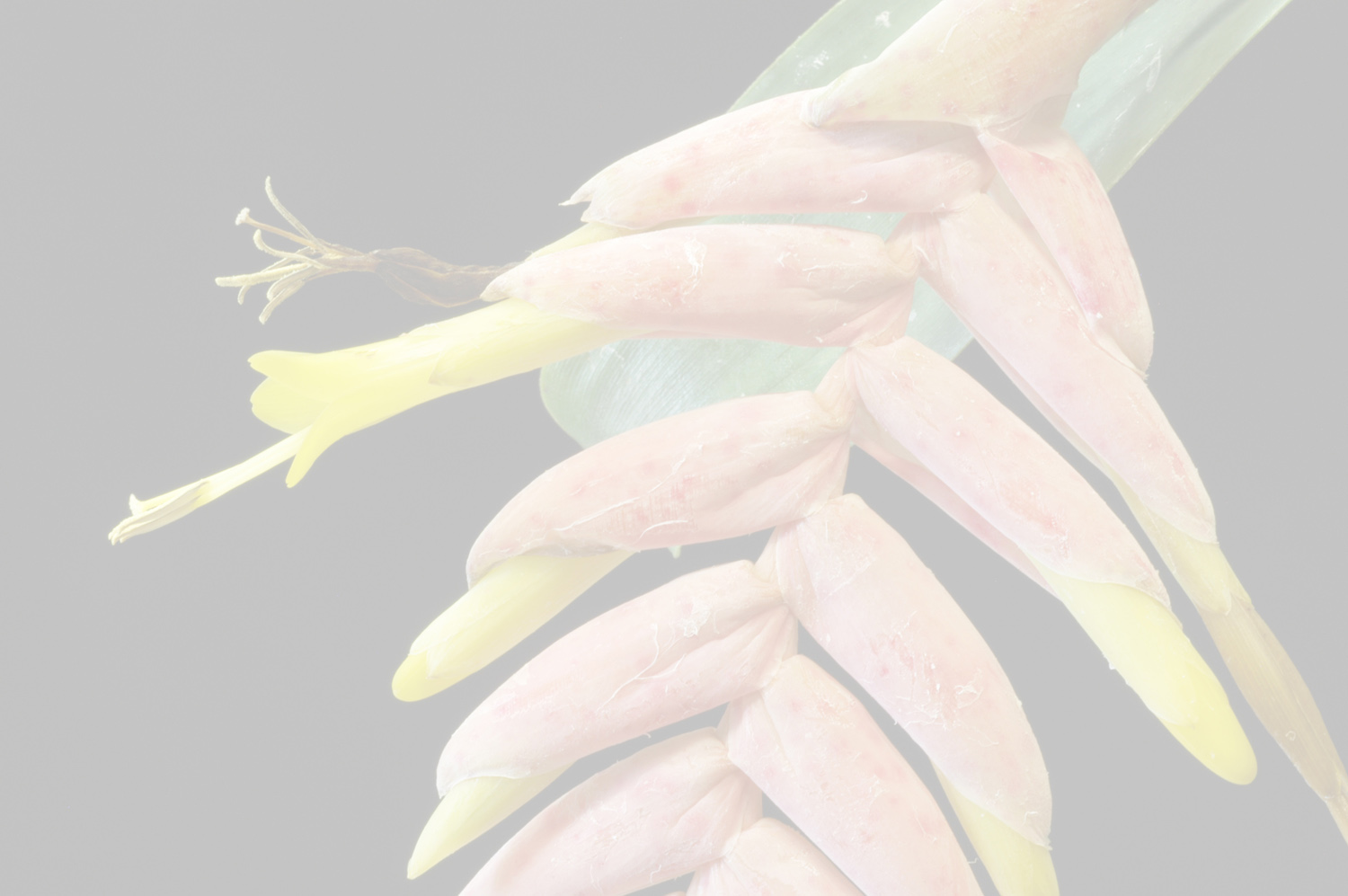Vriesea corcovadensis (J Britten) Mez
Literature references:
*move your mouse pointer over the page numbers to see comment
Comments:
- Butcher's notes
I asked Harry Luther why the leaves and inflorescence on my V. corcovadensis imported from Seidel seemed to change to V. lubbersii in its offsets!! Here is his reply.
2/10/1993
V. corcovadensis which I sent you the xerox of had twisted flowers when fresh, not tightly polystichous but twisted slightly. After pressing, it is harder to tell but look at the lowest flowers. Also the flowers on several things (especially the distichously flowered Guzmanias and Mezobromelia) are somewhat polystichous in bud becoming more and more distichous as they develop. Note that the photo of the Neotype is at very early anthesis, the Raack specimen is at very late anthesis. Note also that V. corcovadensis, in nature grows in the upper canopy with grey Tillandsias.
The overall habit can be expected to change when grown softer and potted. Vriesea lubbersii and V. corcovadensis are obviously closely related (as are V. flammea, poenulata and correia-araujei to each other) but are distinct in my opinion. It is not in cultivation or is very rare. —See Smith & Downs 1977
- Geographical Distribution: Exclusive to the Atlantic Forest Domain, principally in southeast Brazil, with records from the state of Bahia to extreme southern of Santa Catarina. Curiously, there is no record of the species in the state of São Paulo ( Fig. 2c ), and it thus shows a discontinuous distribution, probably because of lack of collections or extinction of the species in this state. The taxon is abundant in the state of Rio de Janeiro, and rare in the other states where it has been recorded.
Conservation: B2 Least Concern (LC). —See Silva & Costa 2011

